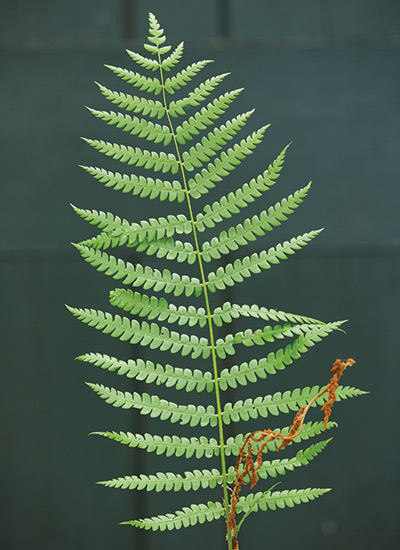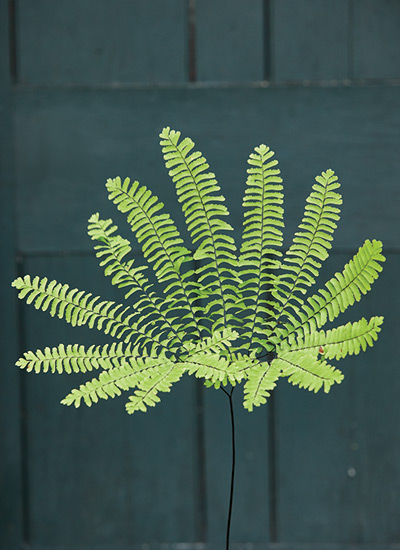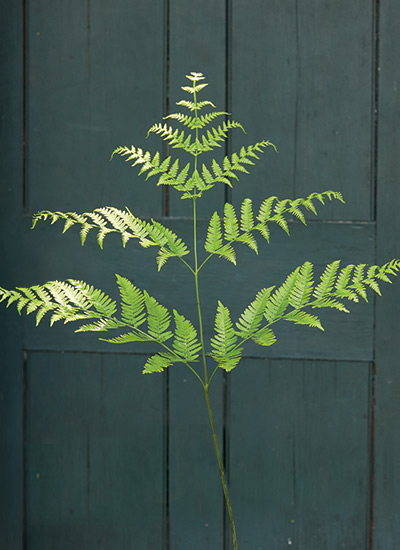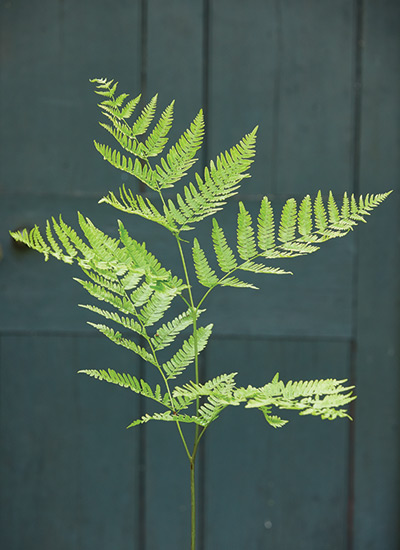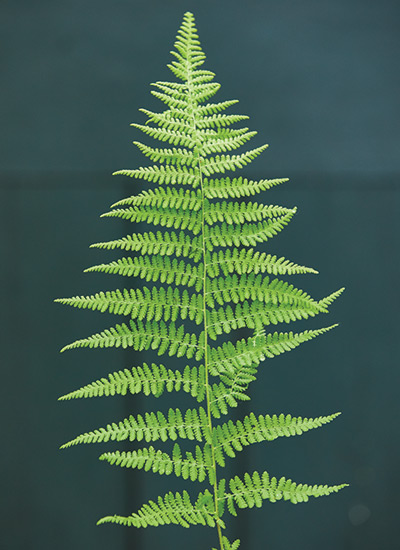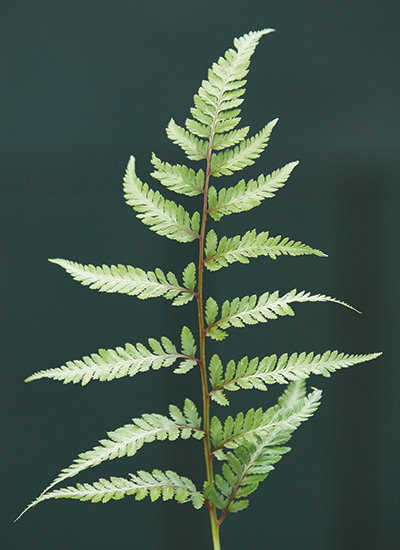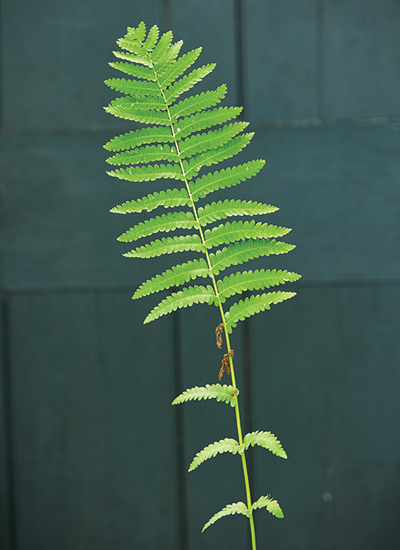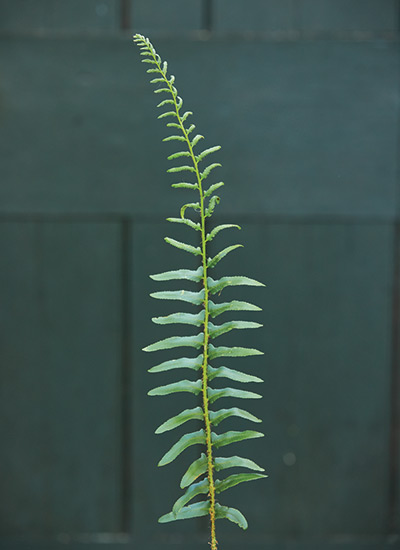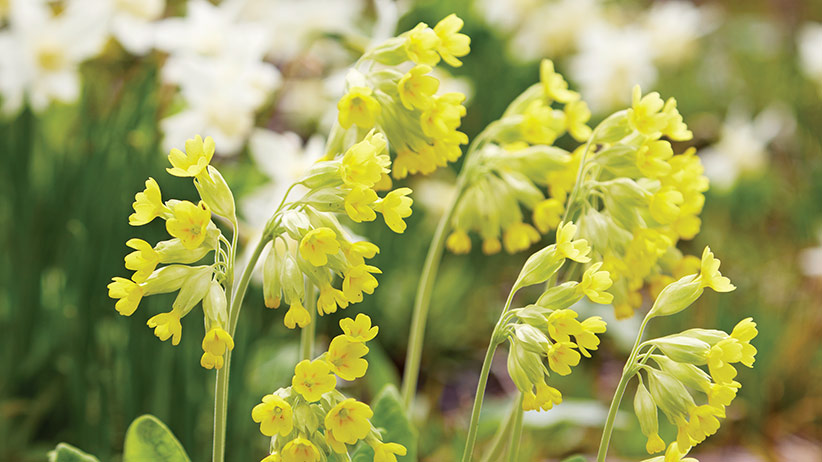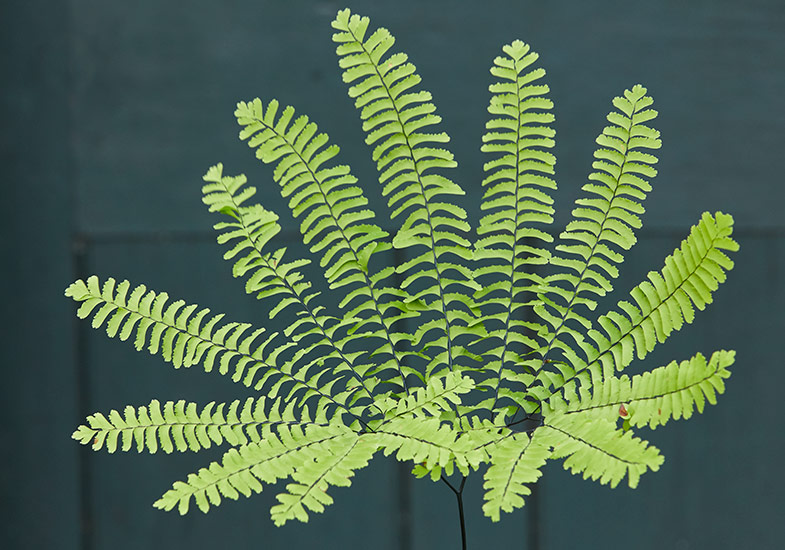
A fondness for ferns
Ferns are tougher than most gardeners realize. Just ask Lyndall Heyer. She has filled her woodland garden in snowy Stowe, Vermont, with a tapestry of different types of hardy ferns that fill her zone 3 shade garden with grace and texture. Ferns are, after all, the epitome of elegance and simplicity. Lyndall’s garden is tucked into a north-facing hillside surrounded by shade-tree covered peaks. Over the years she has carved out at least 12 different gardens on the 13-acre property she shares with her husband. Her shade gardens — dominated by different kinds of ferns, hostas and astilbes — require almost no effort at all. That’s because she depends on cold-hardy ferns that pretty much thrive on their own.
“I don’t grow finicky plants and I don’t grow finicky ferns,” Lyndall says. “If you have the right plant in the right place, especially with ferns, it will just grow and grow.” Lyndall has lots of shade and amends her soil regularly with both locally made worm castings and compost.
You Might Also Like:
Ferns in Containers
Shade Garden Makeover
Colorful Shade Garden Combos
Lovely Plant Pairing for the Shade

Mix up textures
Because their foliage provides instant texture, consider the habit of the fern and the shape of the frond when selecting different kinds of ferns for your garden. Mixed plantings of ferns by themselves or with other foliage plants can be an appealing mix of textures. The delicate fronds of maidenhair ferns look lovely with blue hostas and purple coral bells. Bright green interrupted ferns stand out when planted with variegated Solomon’s seal and Japanese aralia. Soft-green fern fronds make good neighbors with columbines and bleeding hearts because they hide the spring ephemerals’ fading foliage.
“Hay-scented fern fills in naturally on my banks and edges,” says Lyndall. “Japanese painted fern behaves beautifully and is planted with Virginia bluebells that grow up through the fern fronds. But my favorite is the royal fern. It’s large with an open habit and unusual fronds. I simply enjoy it planted by the side of my driveway.”
Ferns can be addictive
Once you get started growing ferns, you may find yourself becoming a collector of different types of ferns. You may want to amend your soil with compost. A transplanting spade will make quick work of dividing and planting. Of course, ferns appreciate regular watering and a great hose nozzle is essential. And if you want to dig deeper, here is a great book about ferns you should check out.
Ferns are easy to grow
Whether you have a secluded pond or a tranquil woodland setting, you can find a fern to add beauty to any spot in the garden. Hardy ferns, including all the ones featured, generally require rich, moist soil with extra organic matter and most grow in neutral to moderately acid soil. That’s because they naturally thrive in the dappled shade of the woodland, growing in soil well-amended with rotted leaves. They are so easy to grow they never need staking, pinching or pruning, except for the removal of the occasional damaged frond.
How to grow ferns
- If you have heavy soil, break it up and lighten it with rotted leaves or compost at planting time.
- Plant ferns shallowly, with the crown flush with the surrounding soil or slightly above to prevent crown rot.
- Keep ferns well-watered for the first couple of years. The best time to plant is in spring and fall when rain is more plentiful.
- If it is an evergreen fern like Christmas fern, you might want to thin the old ragged fronds in spring as the new ones appear. Deciduous ferns will require either fall or spring clean-up.
- In spring, apply a thin layer of mulch to help hold down weeds and conserve moisture. Fertilizer is not necessary as long as mulch is left in place to decompose. A topdressing of well-composted manure every couple of years helps build the soil and adds nitrogen.
- Ferns rarely need to be divided, but if you want to share with a friend, you can dig up and divide your ferns into several new plants every two or three years.
- Don’t expect them to look like much the first year or two after planting. They take time to establish and it may take four or five years before they become fully mature. Ferns only get better over time.
You Might Also Like:
Garden Gate's Favorite Hostas
Shade Garden Plans
Marvelous Moss Garden
DIY Spiral Topiary

Different types of ferns
Here are 10 of the hardiest and easiest garden-worthy ferns from Lyndall’s garden.



